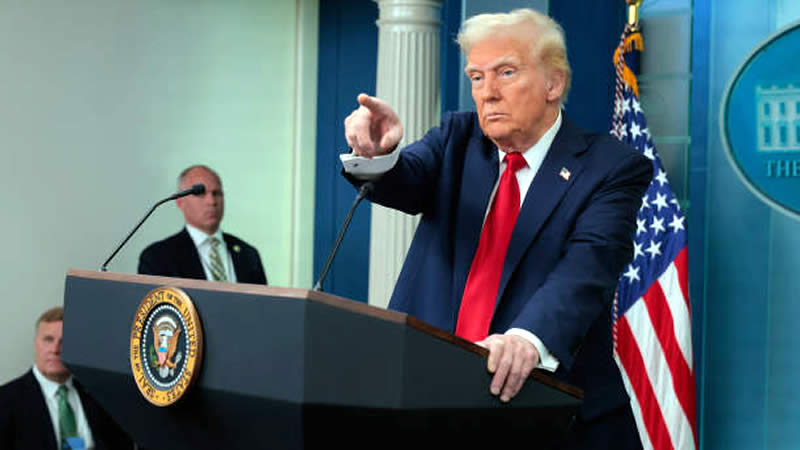President Donald Trump is drawing on America’s past to justify his current tariff policies, but economists say the historical comparison doesn’t quite add up. With his broad “reciprocal tariff” plan temporarily paused at a 10% rate — except for China, which faces a steep 145% tariff amid an ongoing trade war — Trump maintains that tariffs will pressure foreign nations while bolstering U.S. revenue.
However, critics argue that the financial weight falls largely on American consumers. In a press briefing from the Oval Office on Wednesday, Trump claimed that high tariffs helped make the United States prosperous during a key period in its history.
More: Trump Criticized for Giving Kids a Card of Himself After Shooting Attempt
More: Federal Judge Tears Into Trump Officials for Cover-Up in Deportation Scandal
“It was a long time ago, we were an all-tariff nation,” the president said. “Foreign nations paid taxes; they paid money to us in the form of tariffs, and that was when we were the wealthiest. We were the wealthiest proportionately than we ever were.”
Trump referred specifically to the years between 1870 and 1913, a stretch he described as an economic golden era. “They formed committees in 1887, in particular, but they formed committees to determine what we should do with all the money… we had so much money, we didn’t know what to do with it,” he said.
Historical data backs up that tariffs during the late 19th and early 20th centuries often ranged between 40% and 60%, according to a 2024 report from the White House Council of Economic Advisers. Known as the Gilded Age, that period did see strong GDP growth, averaging nearly 5% annually.
However, economists warn against drawing direct lines between tariffs and prosperity. The economy, society, and role of government have all shifted significantly since the 19th century. USAToday notes that while today’s GDP is much higher than during the Gilded Age, expectations from government services are also vastly greater.
More: Elon Musk gives bombshell update on his work with Trump
More: Trump Reportedly Stands by Embattled Defense Chief as ‘Signalgate’ Scandal Deepens
Experts also point out that the Gilded Age was marked by rampant inequality and corruption, casting doubt on its viability as a model for modern policy. “We did grow rapidly in the late 19th century. But it’s a stretch to attribute it to tariffs,” said Douglas Irwin, a professor of economics at Dartmouth College, speaking to PBS News.
“The president is more accurate when he paints with a broader brush and says, ‘Look, this entire period with fiscal surpluses we grew rapidly.’ That’s true of this 40-year period,” Irwin said. “But, when you dig down to the details and say, ‘We raised tariffs in this instance,’ that’s where things go awry. Or the story doesn’t quite hold together as well.”
You Might Also Like:
- Is This a Joke?’: Joe Biden Slammed for Making TV Comeback on The View After White House Exit
- Ben Affleck reportedly Eyes High Profile Romance with Angelina Jolie after JLo Split
- 3-Year-Old Girl Dies Hours After Being Sent Home for ‘Rash
- Omar Stirs Controversy with Profane Response to Reporter on Deportation Case
- ‘That Man Loves Me So Much’: Meghan Markle Calls Prince Harry Her ‘Super Mario Hero’ in Tearful Tribute to Their Dream Life

